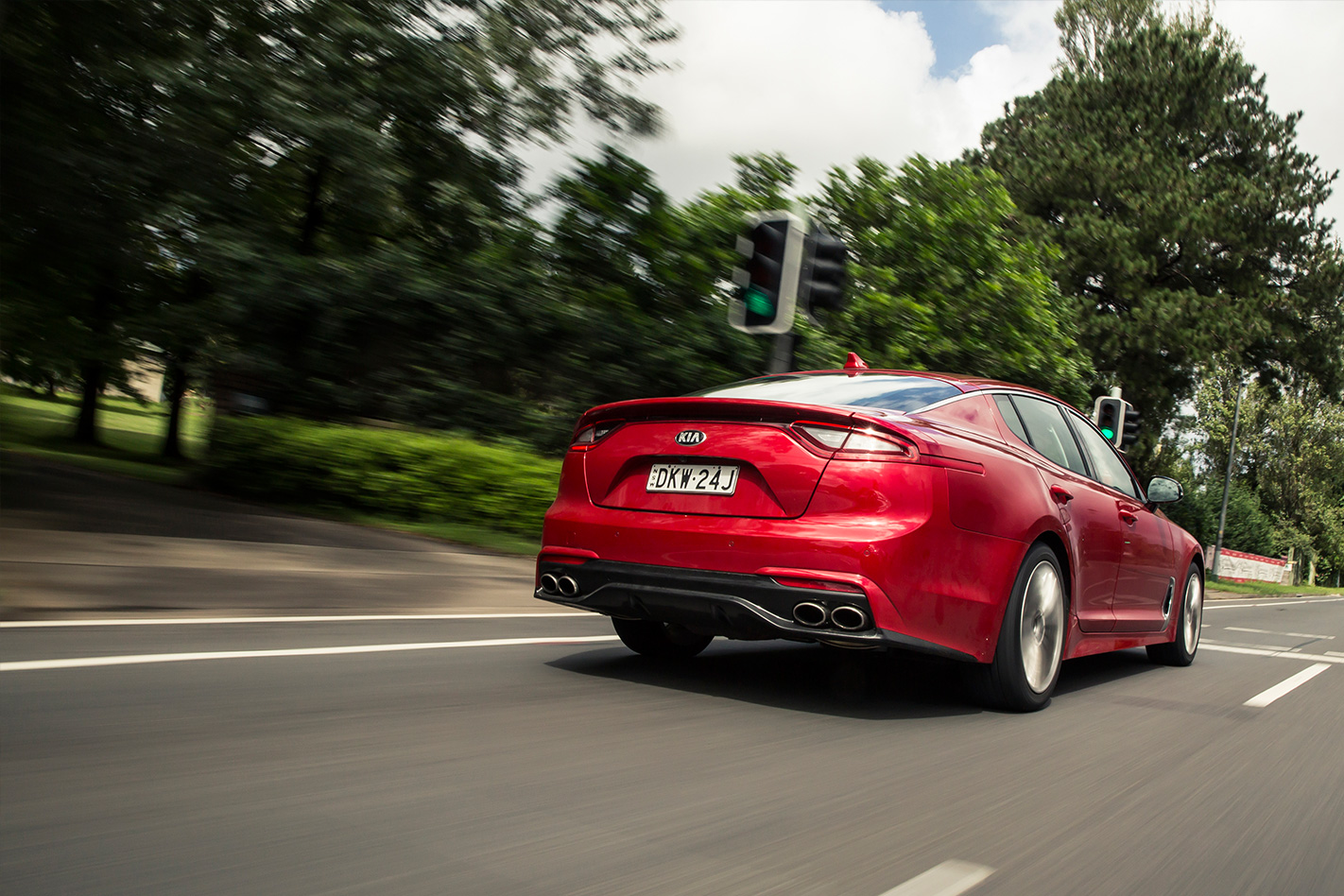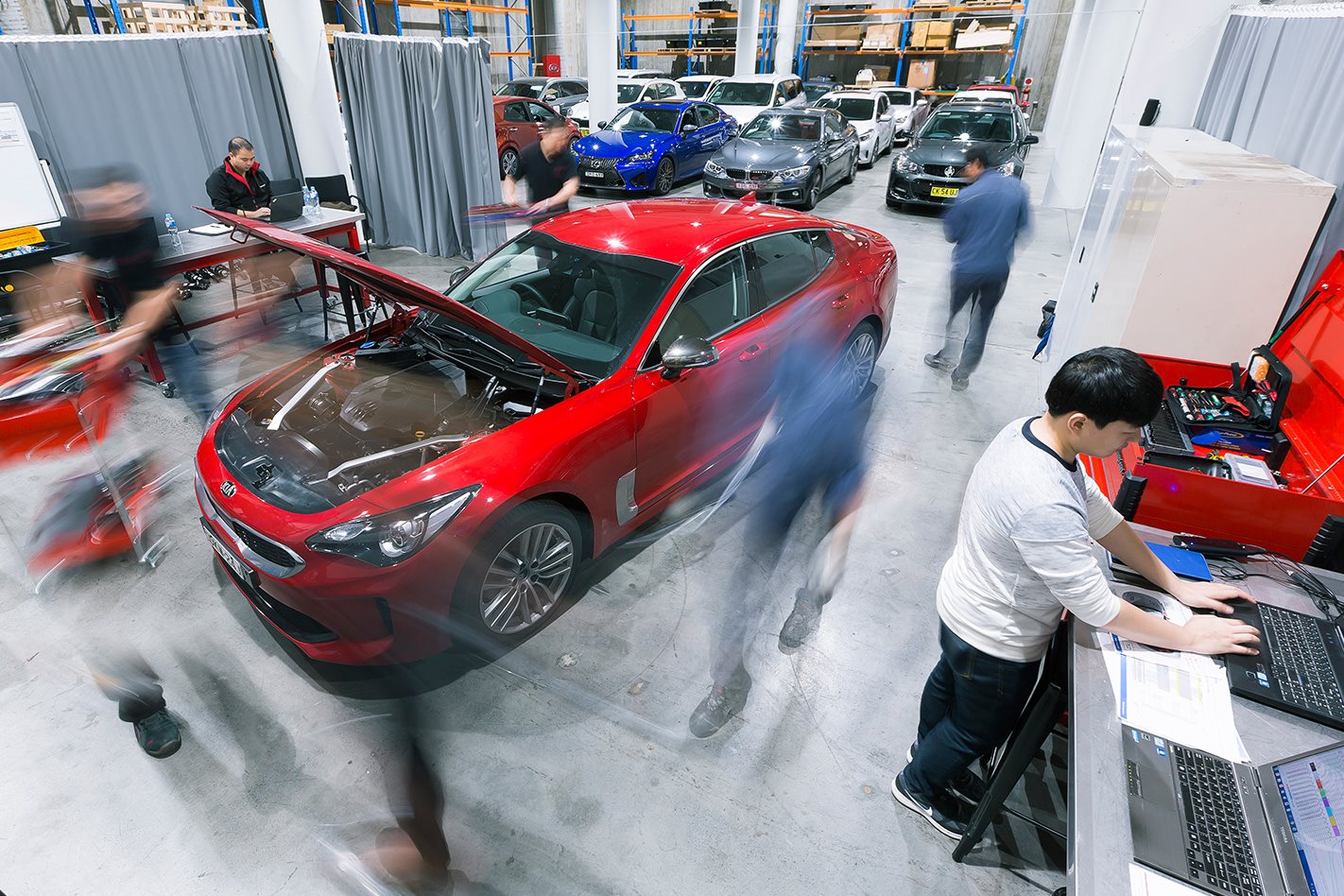Aussie chassis tuning of Kia’s rear-drive Stinger begins not in the flowing climbs of the Great Dividing Range, but deep inside Kia’s vast testing facility in Namyang, a two-hour bus haul from South Korea’s capital, Seoul.
It’s the self-contained functionality of a proving ground that makes them so desirable. Here, you bolt in a new set of components, drive out the door and, a few minutes later, you’re flat out on the ride and handling circuit, unemcumbered by traffic and free of speed limits. And you have unlimited access to a head-scrambling number of competitor vehicles.
As has been the case since 2010, passionate rally driver and talented automotive engineer Graeme Gambold is Kia’s go-to suspension guy. Gambold and his chassis development crew begin by plugging swathes of design data – front and rear centre-of-gravity height, wheelbase, track widths, roll-centre heights, sprung and unsprung weights – into a VDA (Vehicle Dynamics Analyser) computer simulation program to establish a kinematic baseline. And not just for the Stinger, either. The Koreans have comprehensive data on every European benchmark you care to name, having analysed the competition in painstaking detail. Not the current rear-drive Commodore, however.
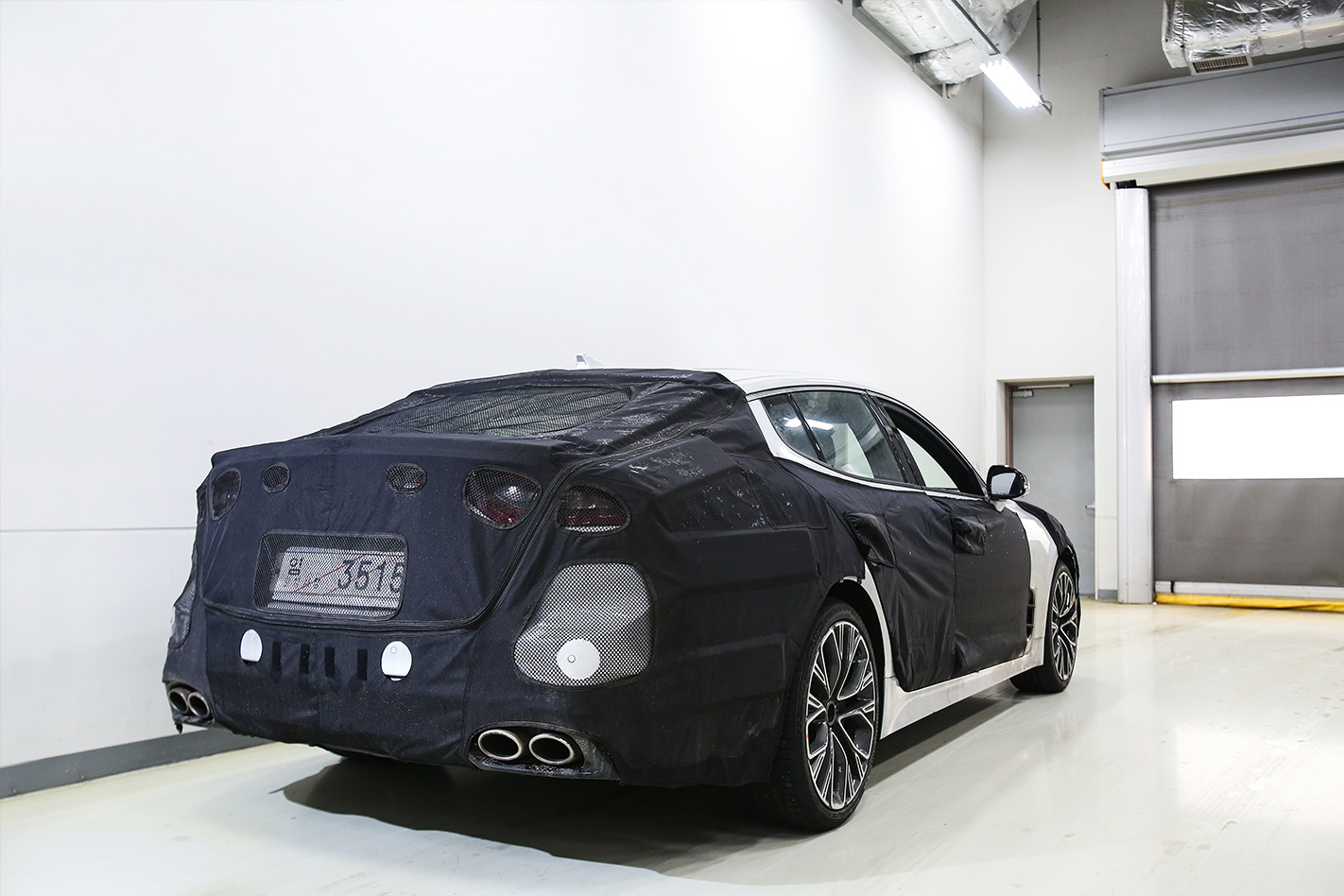
The Aussies are restricted to a small number of tuneable components. In the case of Stinger, it’s four front springs and four rear springs for both the four-cylinder and V6, three front anti-roll bars and three rear anti-roll bars each, as well as a range of damping rates and steering tunes. Gambold simply has to make it work.
Six months before on-sale, Stinger is already too far down its development path for the Koreans to approve any tuning part outside the off-the-shelf stuff available in Namyang’s workshops. Says Gambold: “We don’t play with kinematic geometry – arm lengths, roll-steer coefficients, bump steers – because we trust and work with the data that the car is presented with. That stuff is vehicle design, not vehicle tuning. If there’s a big problem, then we’ll identify it and negotiate it, and there have been a couple of times where we’ve been successful in orchestrating change on kinematic design. But, generally speaking, we work with what we’re given. [The Koreans] do enough benchmarking of other vehicles to know what they’re doing”.

What he’s certain of, however, is that the domestic (Korean) suspension tune of the V6 won’t work for Australian roads. “Before I’ve driven it, I can tell you now I won’t particularly like it. Firstly, it’s going to pitch because the front is too soft. Its roll-couple distribution [the relative roll stiffness between front and rear] for a rear-wheel car is too neutral, so it’s going to lift the inside rear wheel a fair bit so it’ll probably have poor traction,” Gambold says.
“Even though they’re happy with it in their country and it suits their driving styles, I know that for Australia it won’t work. We have a lot of focus on pitching because we drive down country roads at 100 kays and if you’ve got a car that’s porpoising, you’ll notice it. Here [in Korea], you won’t. They like it because it gives them a bit of a luxo feel, an undamped feel, a bit of pitch, but we don’t like that.”

In comparison, the initial Aussie tune feels far more cohesive, if still a bit understeery – especially when back-to-backed with benchmarking vehicles, which include a BMW 428i xDrive Gran Coupe and an Audi A5 1.8TFSI Sportback, as well as a BMW M4 and Mercedes-AMG C63 S sedan to experience the other extreme. We deem the 428i the most relevant for comparison, with its softer rear end, pointier steering, and overall dynamic superiority to the (old-gen) A5. Attention then turns to the Stinger four, and Gambold thinks the domestic tune isn’t bad.
“Their final tune is the same hard parts as we want… and when we drove it we were really happy with it.” But pushed hard in the lane-change, the Stinger four understeers strongly, unlike the much sharper 428i. Limited by spring choice, Gambold opts for a smaller front anti-roll bar and has asked the on-site engineers from damper supplier Mando to rebuild the 2.0T’s rear dampers with reduced rebound and increased compression to lessen the understeer by “holding the rear end up”. Instead of inertly following the front, Gambold wants the Stinger’s rear end to play a contributing role in pointing the nose into a corner.
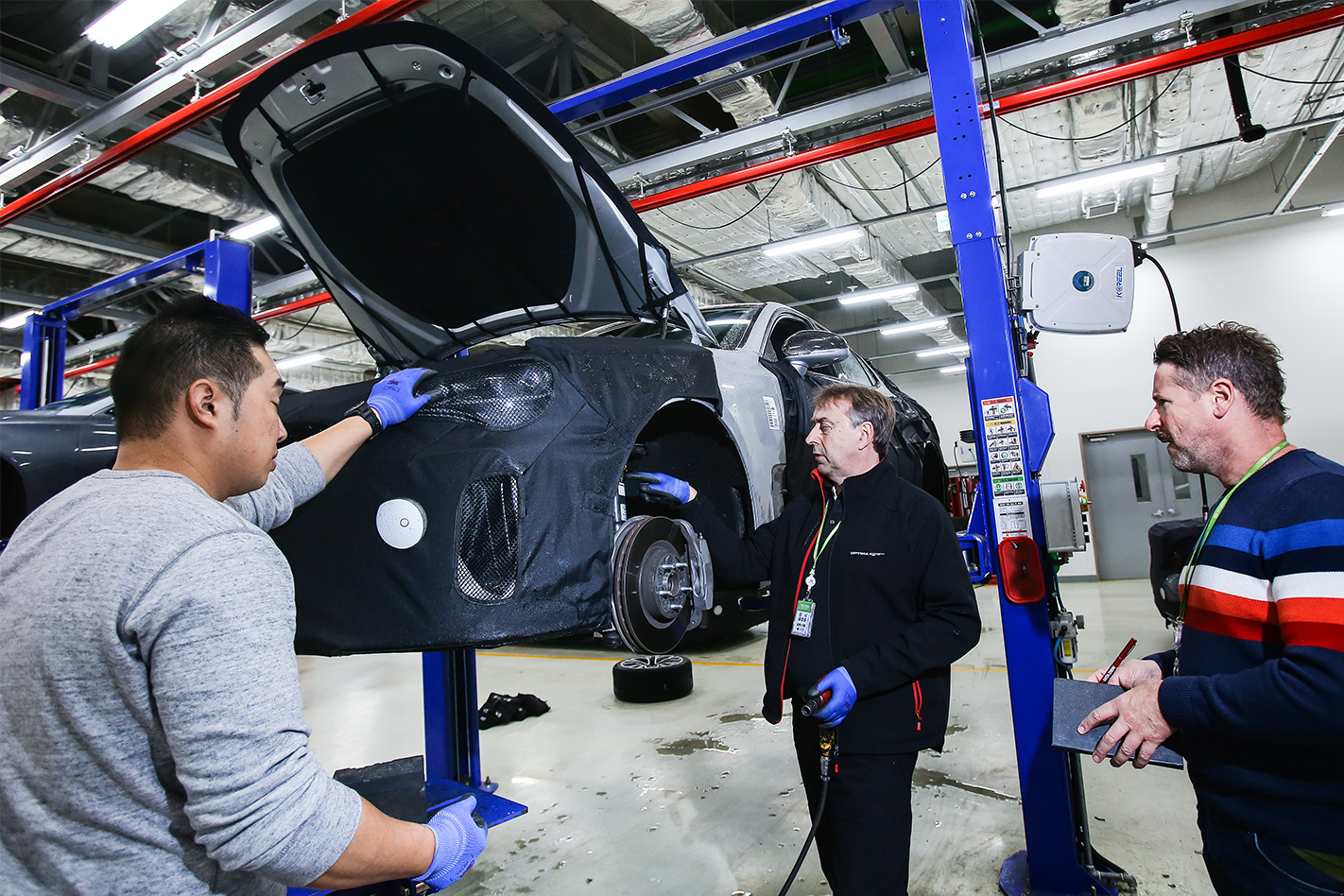
Back in Sydney, the tuning team’s deadline is just as tight. When I head out to Kia’s head office workshop, they’re determining the control strategy for the ECS dampers.
“We’re looking at steering angle, brake pressure, acceleration position, lateral G-force, vehicle speed, the mode switch the driver has selected, body G-force, and wheel G-force,” says Gambold. “And from those inputs, the solenoid valve gets a logic from the map that we build. We’ll extrapolate the European high-speed data, and we can play with a lot of things – roll, pitch, bounce, slow roll, fast roll, hard braking, give it squat to help traction…”

Back at Kia HQ, I deliver my feedback on the four’s very sharp turn-in. “I don’t typically like that feel”, says Gambold. “I don’t like a fast rear yaw response, so if it’s doing that then we’ll probably tame it a bit. But then you can tame a lot of that with the power steering tune.”
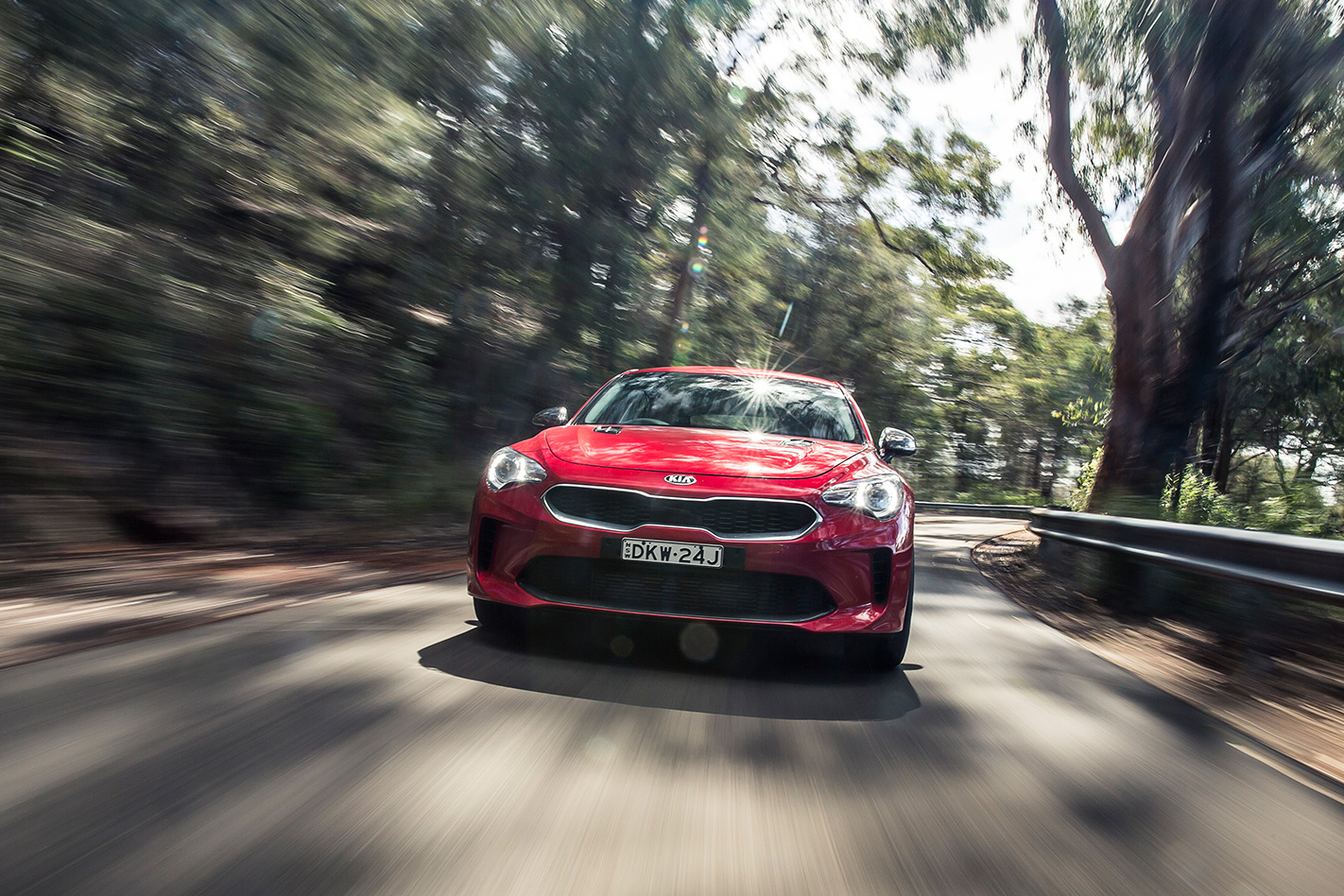
“Hours and hours of driving up and down on the same piece of road, changing numbers,” says Gambold. It’s much more mentally challenging than it sounds. But thanks to the engineers’ unwavering patience, persistence, and passion, our Stinger gets to be the best in the world.
